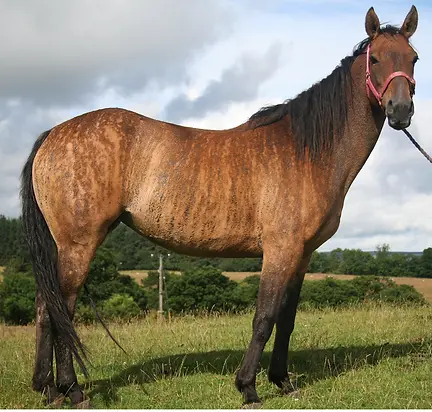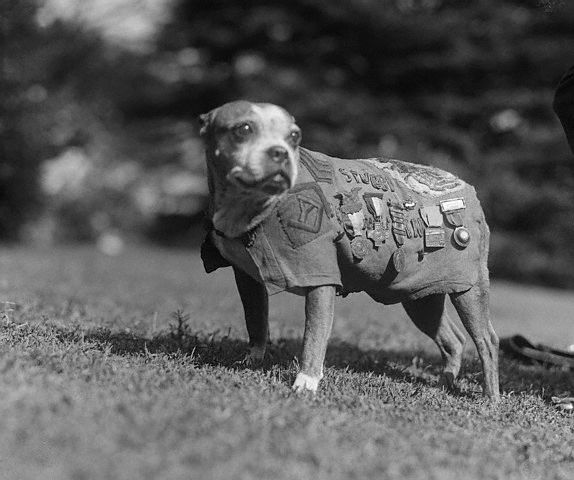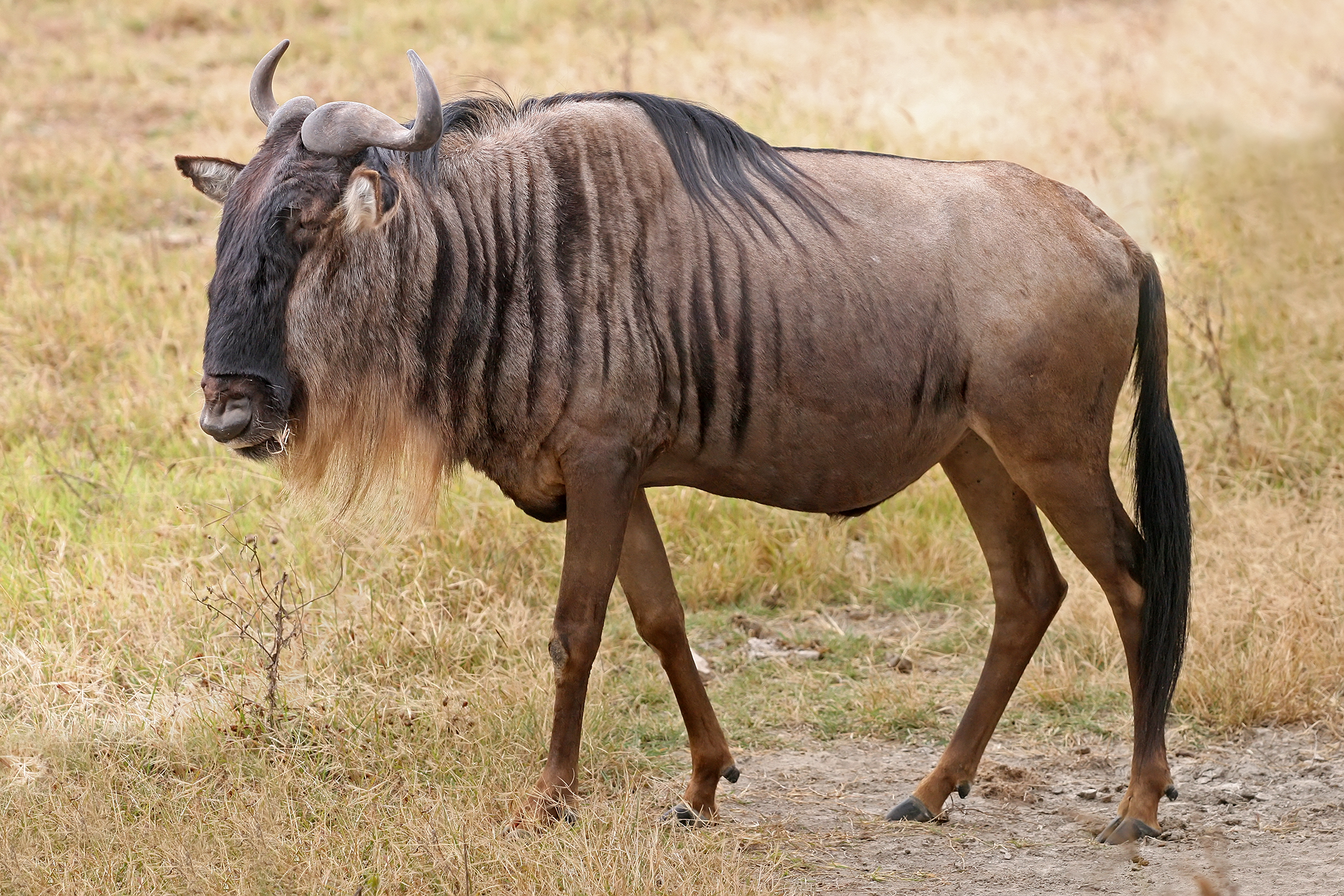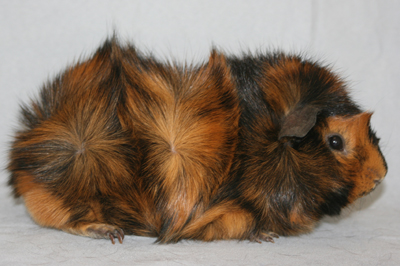Unfortunately (or fortunately) we aren’t able to own a big stripy cat known as a tiger. Wah-wah! But… we can own a faux tiger in a brindle dog!
What is brindle?
Brindle is coat coloration pattern that carries stripes like a tiger! It can be found in a multitude of shades from sandy tan with dark streaks, to silvery grey with dark streaks or darker brown with dark streaks. Or they have light streaks on a dark background or… their steaks/stripes are so tight together that the overall color reads as black (this is called sealed brindle!).
Formally (per dictionary.com): brindle noun a brownish or tawny color of animal fur, with streaks of other color.
This color pattern is not only found in dogs but cattle, wildebeests, guinea pigs, rabbits (known as harlequin), cats, and, rarely, horses can carry brindle coloration too!
Wait… brindle cats???
Indeed, it seems like you may know the colors by their cat color name: tortoiseshell! And if you haven’t met a tortoiseshell cat, you’ve at least seen one (or you just googled to see what a cat with that coloring looks like haha!).

Brindle horses too???
So brindle horses are an anomaly. Their stripy coat pattern seems to be a gene mutation or possibly the fusion of a twin while in the womb (chimaerism). Sometimes the brindle passes to the next generation, typically it doesn’t, depending on the reason that is creating the brindle. Additionally brindle horses carry a funky hair texture and often short mains and tails.
UC Davis Veterinary Medicine has a breakdown on how the genetic might be passed (plus they do brindle testing for horses!)
(If the information on their website looks vaguely familiar it goes back to high school biology of offspring variants between two parents A & B etc. It also shows up quite frequently with doodle type dogs as in F1, F2 etc!)

The most common brindle you will encounter in real life will be on a dog… or a cow skin rug found at Ikea! We’re diving into dog brindle genes!
Dogs have roughly 19,000 genes, stored and sorted within 39 chromosomes that dictate every nuance of your dog – from size & height, to hair length and furnishings and… coat color!
Although coat color can be complex – brindle, merle, roan, spots, tri-color, black & tan, etc – everything starts with TWO basic pigments!
- Eumelanin (black)
- Phaeomelanin (red)
Mixing & matching these two colors creates ALL the coat colors found within dogs! And within each of the colors there can be genetic variants that change how the color is displayed.
Eumelanin’s default color is black, but variants dilute the color to produce liver (brown), blue (grey) & isabella (pale brown). Eumelanin also affects the color of eyes and noses.
Phaeomelanin’s default is red (not red red but instead a gold or yellow color). Variants not only dilute the color for lighter colors but also can make the reds stronger (as in the coat color of an Irish Setter).
The 8 genes for coat color:
- A (agouti) locus – controls the distribution of eumelanin (black) & phaeomelanin (red)
- E (extension) locus – creates black facial masks, red or yellow coats
- 4 alleles, dominate to recessive:
- melanistic mask (Em), grizzle (Eg), black (E) and red (e).
- K (dominate black) locus – controls dominant black, brindle & fawn colors
- B (brown) locus – master of brown, chocolate & liver
- 2 alleles:
- B (dominate brown) & b (recessive brown).
- Two recessives (bb) are required for diluting black to brown.
- In red/yellow pigment dogs the brown allele can change the color of nose & foot pads to brown!
- D (dilute) locus – responsible for diluted pigment (causing blue or very pale brown)
- 2 alleles:
- D (dominant full color) and d (recessive dilute)
- It takes two recessives (dd) to lighten black pigment to grey or black & red pigment to cream!
- M (merle) locus – causes ALL the merle!
- merle only dilutes eumelanin (black) pigment!
- H (harlequin) locus – creator of large black patches on white dogs
- S (spotting) locus – master of the interesting coat patterns like piebald, particolor, & extreme white
We made it through the 8 genes for dog coat color. Let’s look deeper at the brindle gene. It’s going to get a bit more intense!
Our focus is the K locus, controller of dominant black, brindle & fawn colors.
Within the K locus there are 3 alleles – KB (dominate black), kbr (brindle) and ky (yellow/non-solid black – allows A locus to be expressed, recessive).
Since the brindle (kbr) is in the middle, it is entirely dominated by the KB gene but is dominate over the ky gene. Which means a brindle dog can have the genotype of kbr kbr or kbr ky (yes this is like the F1, F2 doodle dogs & if they carry furnishings).
If a dog has one or two of the brindle kbr alleles it will express whichever alleles it has on the A locus (amounts of black & red in the dog’s coat) but ALL phaeomelanin (red) in the coat will be brindled!
So simply… a dog that carries red colorations that breeds with a dog that carries brindle coloration (and it only needs ONE copy of the brindle gene) will produce puppies that carry brindle!
Now given the assorted mix and match that can happen with genes isn’t a+b=c, the puppies of the red + brindle litter could result in ALL brindle pups, some brindle pups, or even… none!
As noted by this litter of puppies Tri County Humane Society had this spring. Yes they are all litter mates!
This litter included: red brindle, tan brindle with patches of white, black & tan with ticking (cattle dog patterning, no brindle), black & tan (no brindle) and one white with a touch of color on his ears and eyes (St. Bernard vibes & no brindle). Which means… genetics for brindle, black & tan, ticking & white coloring patterns including piebald can show up in many variations due to the mix and match of genetics!
If you want the gist of how brindle can be passed from generation to generation Newcastle Boxers has a well written out visual set. This blog post from Three Monkies Farm has some additional good information, especially about how brindle can show up in non brindle dogs – labradors!
A smidge of history!
The brindle color harkens from history. Greek & Roman Molossus dogs (mastiff type dog, predecessor to most mastiff type dogs) carried brindle coloration. Which is why many mastiff type -great dane, cane corse, mastiff, Neapolitan mastiff, and bullmastiff etc – dogs carry brindle in our modern times.
The Bullenbeisser (or German bulldog) carried brindle and was the progenitor of boxers, bulldogs, bull terriers, staffies and pitties – all carriers of brindle coat colorations.
A notable notation: the Illinois censuses!
In the year 1855 there were 9,347 brindle dogs registered in the state!
- In 1860, there were 9,018
- 1865, there were 6,510
- 1870, there were 1,726
- 1880, there were 601
- 1890, there were 187
- 1895, there were 43
- 1898 a mere… 9! Of the nine, 7 belonged to wealthy coon hunters in Calhoun county.
The author notes that brindle dog family contends with some fatality or a rather long continued streak of bad luck for the past 25 years lending to the decline of registered brindle dogs in the state.
Such as (all paraphrased): “If distemper breaks out, it tackles the brindle dogs first & doesn’t seem to bother others as long as there is a brindle is left. If a flock of sheep is chased, the farmer sets out, careful not to shoot the neighbor’s dog, but if he meets a brindle dog he shoots him on general principles. If a dog is killed by the cutting of a coon tree, you may safely bet the dog is a brindle.”
Seems like there was ill faith in a brindle dog in 1899 – alluding that they were prone to disease, pestering livestock & not being the smartest to move out of the way of a tree being felled.
Note: this is not the first time in history where colorations of dogs lent to the impression of being brainless. When flat coated retrievers were being cultivated the yellow coloration was culled as yellow colored dogs were considered rather dumb. These yellow flat coats turned into cultivating their own breed – golden retrievers!
The oldest notation for a brindle dog in newspapers I found in 1805 for a stolen brindle dog 219 years ago (as of 2024). The cool thing about this ad is how descriptive it is about the dog – large brindle bull-dog, crop ears, piece off the end of his tail (possibly to indicate a working dog), white face, white ring around his neck, one or two black spots on the top of his head, round his mouth red.
$20 is roughly $530 days in modern equivalent. Or the $5 for dog only would be roughly $130.

It reads: Twenty dollars reward. Stolen, from the subscriber’s slaughterhouse, a few days ago, a large brindle bull-dog. One year old, crop ears, and piece off the end of his tail; a white face, and white ring around his neck, one or two black spots on the top of his head, round his mouth red. The above reward will be paid on convicting the thief, and securing the dog so that I get him again; of Five Dollars for the dog only, and reasonable charges.
How about some famous brindle dogs? Do you remember this dog?
Did you guess “Petey” from The Little Rascals? Then you are right! “Petey” or “Pete” was the dog who accompanied the boys and girls of “Our Gang” in the 1920s & 1930s. The original Petey is in the top picture, his son with a mirrored eye circle is on the bottom! And BOTH dogs were brindle!
Here’s one you might not know…

This is “Stubby” one of the most decorated war dogs of World War I! In 1917 he stumbled across Private J. Robert Conroy and the 102nd Infantry, 26th Yankee Division as they trained for combat on the fields of Yale University. The infantry men adored him, adopting the pup and training him in bugle calls, drills even a modified salute!
When the division was shipped overseas to fight, they smuggled him with and to the war in France. Stubby survived a gas attack, recovered and was then able to detect even traces of gas which he alerted the men to. Back in the fight he was injured by a grenade attack, brought to the mobile hospital and recovered. He learned to locate wounded men, leading them back to safety or barking until they were rescued. At the end of the war he spotted a German soldier near the trenches and went after him, causing the German soldier to stumble when Stubby bit his legs (other stories say Stubby chomped him right in the rear!). Overall Stubby survived 17 different battles during the war!
He passed away in March of 1926.
Below are a collection of brindle dogs I’ve encountered & photographed throughout the years!
Whew what a read! But tons of epic information! From some history of brindle dogs to the genetics that make brindle dogs brindle (the K locus paired with the A locus amoungst others).
Still want to own a tiger? How about opting for a brindle dog instead!



